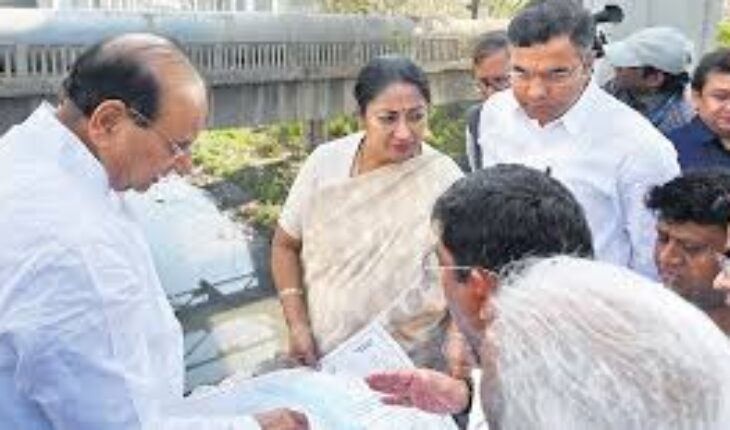New Delhi : Stepping up efforts to rejuvenate the heavily polluted Yamuna River, Delhi Chief Minister Rekha Gupta on Thursday inspected the supplementary drain at Wazirabad, a critical contributor to the river’s pollution load. She was joined by Delhi Lieutenant Governor Vinai Kumar Saxena and Minister Parvesh Verma during the inspection.
The top officials later visited the drainage system near Barapullah Bridge, close to Nizamuddin, to assess the infrastructure’s role in flood and sewage management.
The inspections follow the BJP’s landmark victory in the Delhi Assembly elections, where the party secured 48 out of 70 seats — a mandate that has fast-tracked the government’s focus on environmental issues, particularly the Yamuna’s restoration. On February 16, clean-up operations were launched with the deployment of trash skimmers, weed harvesters, and dredging vehicles into the river.
Pollution in the Yamuna was a central theme in the recent election campaign, with political parties trading barbs over failures in river management, encroachments, and flood control. The BJP sharply criticized the previous AAP government, accusing it of neglecting its promise to clean the river.
Post-election, the BJP-led government reiterated its commitment by including Yamuna rejuvenation as a top agenda item in its manifesto. To strengthen enforcement and protection measures, the Delhi government has sought the assistance of the Territorial Army. A specialized Ecological Task Force is expected to be deployed soon to guard the river against illegal dumping, encroachments, mining, and water theft.
In a related development, LG Saxena recently rolled out an intensified drive to clear the Yamuna floodplains. A dedicated 94-member Territorial Army unit has been inducted to ensure that the reclaimed riverbanks remain encroachment-free.
These efforts are part of the ambitious Yamuna Master Plan — a scientifically driven and sustainable project aimed at restoring the 22-kilometer stretch of the river that flows through Delhi. The plan adopts a four-pronged strategy focused on pollution abatement, ecological restoration, floodplain protection, and community involvement.
The government aims to achieve a significant transformation of the Yamuna within three years, addressing decades of degradation caused by untreated sewage, industrial waste, illegal mining, and rampant urban encroachments.





